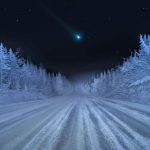Key Takeaways
- The Cat’s Eye Nebula is a fascinating and well-studied celestial object in the constellation Draco, characterized by its beautiful and intricate structure of multiple expanding spheres of gas.
- Discovered by William Herschel in 1786, the nebula was initially thought to be a birthplace of planetary systems, but it is, in fact, a result of a dying star’s emissions.
- The Cat’s Eye Nebula has evolved over tens of thousands of years due to pulses of matter emitted by its central star, forming concentric spheres of gas.
- Scientists have proposed various theories to explain the pulsations, including magnetic activity, a companion star’s gravitational disturbances, or stellar pulsations.
- The nebula’s chemical composition was first measured by William Huggins, revealing the presence of a mysterious spectral line attributed to the presence of nebulium, which turned out to be associated with oxygen and nitrogen ions.
The Cat’s Eye Nebula, residing in the northern constellation Draco, captures the attention of astronomers and stargazers alike with its dazzling display of multiple expanding gas spheres. First observed by William Herschel in 1786, this nebula was initially believed to be a planetary system’s birthplace, but later research revealed a different truth. Planetary nebulae, including the Cat’s Eye Nebula, actually emerge from the death of stars, as small and medium-sized stars exhaust their fuel and eject matter into space.
The Cat’s Eye Nebula’s transformation spans tens of thousands of years, during which the nebula’s shape evolves significantly. Pulses of matter emanating from its central star give rise to the complex structure, featuring 11 or more concentric spheres of matter. Scientists are still puzzled by the reasons behind these pulses, exploring theories involving magnetic activity, companion stars, or stellar pulsations.
Thanks to the Hubble Space Telescope’s observations in the 1990s, astronomers gained valuable insights into star death and nebula formation. However, the expansion of the Cat’s Eye Nebula remains a topic of study, with more nebulae needing examination for a comprehensive understanding.
One of the Cat’s Eye Nebula’s significant contributions to science was the revelation of its chemical composition. William Huggins, employing a spectrometer, analyzed the nebula’s spectrum in 1864, marking the first measurement of a nebula’s chemical makeup. A peculiar spectral line, initially known as nebulium, left researchers puzzled until the 1920s when it was identified as the product of oxygen and nitrogen ions in extreme conditions—earning the name “forbidden lines” due to their rarity.
The enigmatic Cat’s Eye Nebula continues to captivate astronomers, offering a window into the fascinating life and death of stars and the intricate beauty of the cosmos.
#1

Credit: NASA, ESA, HEIC, and The Hubble Heritage Team (STScI/AURA)
#2

X-ray/optical composite image of NGC 6543, the Cat’s Eye Nebula (X-ray: NASA/UIUC/Y.Chu et al., Optical: NASA/HST).
#3

Image Credit: X-ray: NASA/CXC/SAO; Optical: NASA/STScI
#4

Credit: NASA, ESA, Hubble, HLA; Reprocessing & Copyright: Raul Villaverde
#5

Credit: J.P. Harrington and K.J. Borkowski (University of Maryland), and NASA/ESA
#6

Photographer: Antonio Ferretti & Attilio Bruzzone
#7

ASTROFALLS
#8

Wolf Creek Observatory


